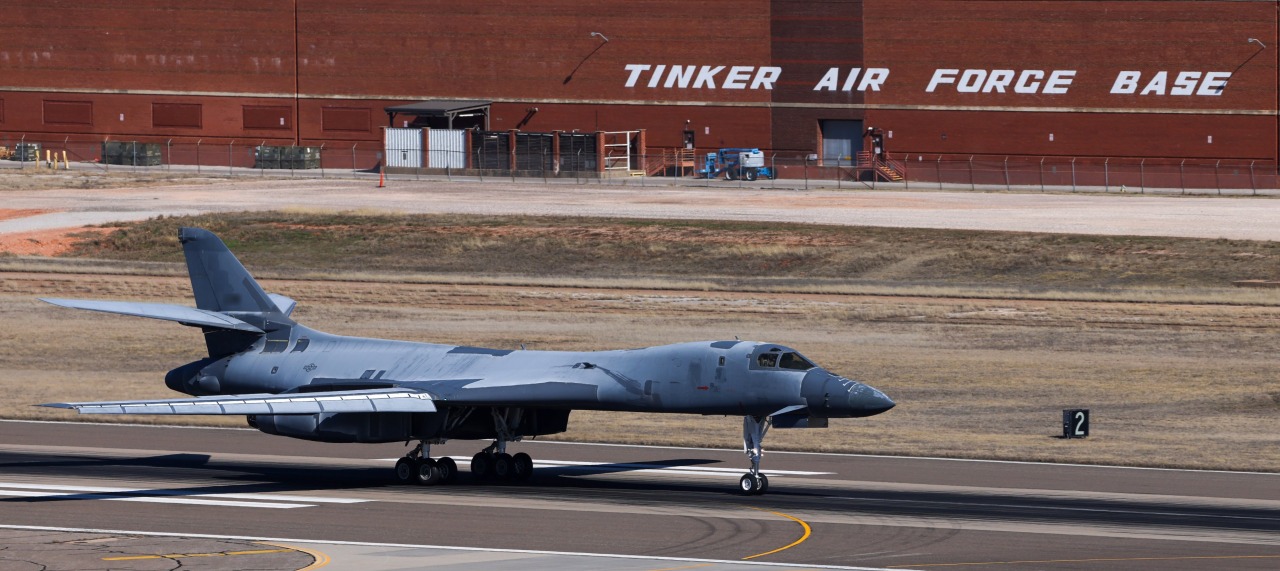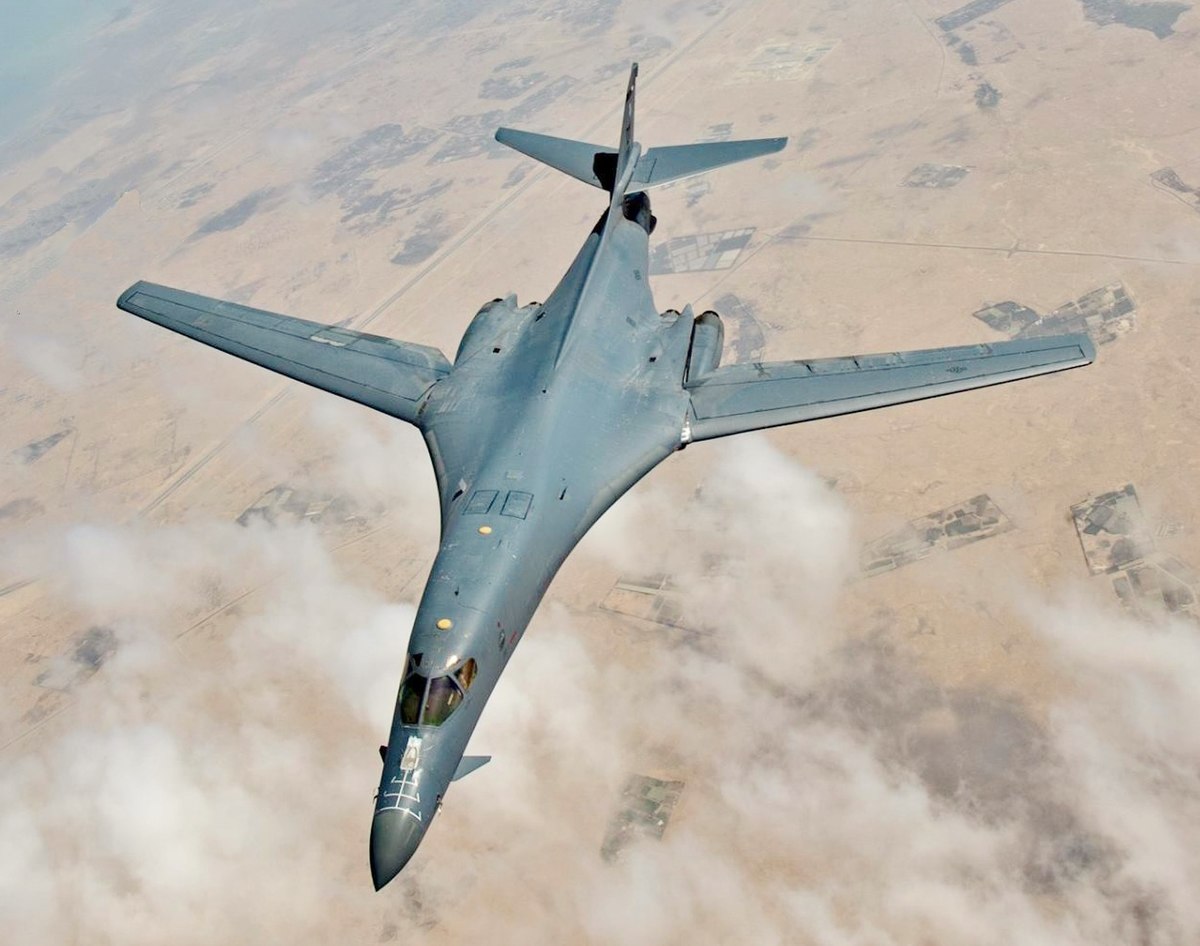In a shining example of the US Air Force’s commitment to its Lancer bombers, a B-1B Lancer, the ‘Lancelot,’ is being restored by the service to replace another B-1B bomber that was destroyed by an engine fire at Dyess Air Force Base (AFB) in Texas last year.
The 7th Bomb Wing announced the B-1 “regeneration” on March 18. This is the first time a Lancer will return to duty after being decommissioned in almost twenty years.
This month, the aircraft was brought back into service by restoring it to flight condition at the Davis-Monthan AFB “boneyard,” following which it is slated to be transferred to Tinker AFB in Oklahoma for comprehensive maintenance and modernization. Photos of the aircraft were published last week and have since gone viral on social media.
Lancelot was decommissioned as part of the divestment of 17 B-1s, which was in line with an Air Force decision made in February 2020 to reduce the fleet of 62 Lancers. The Congress subsequently approved the decision under the National Defense Authorization Act for FY 2021.
At the time of their decommissioning, service officials said that restoring them to “status quo” would have required tens of millions of dollars per aircraft. However, retiring them would free up maintainers’ time and resources to keep the surviving aircraft operational.
The refurbished B-1B Lancer will resume operations at Dyess later this year, marking a very rare feat. In 2004, the Air Force had to call back seven of the 33 retired B-1B Lancers owing to a directive issued by Congress. The last time the USAF got a bomber back to service from the boneyard was a B-52. It was called back from the desert to keep the fleet at the legally required 76 airframes.

“The fact that our Air Force can call up an aircraft that has sat dormant for several years and prepare it to support our long-range strike mission, all within a year, is incredible,” said Col. Seth Spanier, 7th Bomb Wing commander in a statement. “This entire effort speaks to our unwavering commitment to maintaining a combat-credible strike force.”
The reason for bringing the Lancelot back is simple: it is replacing a B-1B Lancer that had to be written off after a terrible accident.
In April 2022, a B-1B caught fire while receiving routine engine maintenance while parked on the flight line. Subsequent analysis revealed that a damaged fan blade caused the huge firestorm that shot debris hundreds of feet into the air.
The USAF described the event as “a catastrophic engine failure” and declared that it would be virtually impossible to restore the aircraft due to the extent of the damage caused. The writing off of the bomber meant that the USAF bomber fleet was reduced from a total of 141 bombers to just 140.
Jedan ✈️ Minus one US Air Force supersonic bomber
On April 21, 2022, one of the F101-GE-102 turbofan jet engines caught fire at US Air Force Dyes air base during routine maintenance of the Rockwell B-1B Lancer supersonic strategic bomber.#USA #AirForce that sucks!!! pic.twitter.com/GCu1GJEYGd
— Crafty News Outlet (@Craft8431) April 22, 2022
Another jolt to the B-1B fleet came when one of the bombers crashed during a training sortie in South Dakota on January 4. Four crew members from Ellsworth Air Force Base in South Dakota ejected safely from their aircraft when the bomber crashed while attempting a landing.
This might explain the USAF’s decision to bring back a Lancer from the boneyard so that the service would have a sufficient number of bombers in case of a conflict.
The B-1B Lancers are expected to remain in service until the next-generation B-21 Raider bomber is inducted, which will be sometime in the 2030s. In the interim period, it may be imperative to keep combat-capable Lancers flying.
Images from Ellsworth Air Force Base near Rapid City in South Dakota, showing the Wreckage of the B-1B “Lancer” Heavy Bomber with the 28th Bomb Wing which Crash-Landed last night at the Base during a Training Exercise causing several Explosions and a Large Fire; the 4 Members of… pic.twitter.com/6mZ9FhzbQp
— OSINTdefender (@sentdefender) January 5, 2024
The B-1B is one of three heavy bombers in the US Air Force, the other two being B-52H Stratofortress and B-2 Spirit. The USAF currently has 76 Boeing B-52Hs, 44 Boeing B-1Bs, and 20 B-2 stealth bombers.
When asked whether the USAF needed to restore an archaic bomber by investing millions of dollars in it, USAF officer Lt Col Jahara Matisek told the EurAsian Times, “The B-1s are not invincible. However, there is no problem bringing an old B-1 out of the boneyard. B-52s and KC-135s are flying around that are older than B-1s. Just because a B-1 had an engine fire 2-3 years ago doesn’t mean you scrap the fleet.”
Some other military watchers have found the decision interesting. Writing for The Telegraph, military and aviation expert David Axe reasoned that any other air force could make do with 140 bombers and reallocate the operating budget of the other written-off bombers. However, the B-1 is expected to take the lead in any potential air conflict over the Taiwan Strait. That was evident, he reckoned, as the US considered it so important that it was paying millions of dollars to retrieve a surplus B-1.
In case of a conflict with an adversary like China, the US would rely on its bombers to take on the enemy. The B-1B would then be even more significant due to its massive payload-carrying capacity.
The B-1B Lancer Is A Prized USAF Possession
The primary anti-ship platform of the Air Force is the four-engine, supersonic, swing-wing B-1, equipped with four crew members and the ability to carry 37 tons of bombs and missiles across continents.
Additionally, it is capable of carrying 24 of the biggest cruise missiles available to the service, including the Long-Range Anti-Ship Missiles, or LRASMs.
The US Air Force claims that a B-1 “can rapidly deliver massive quantities of precision as well as unguided munitions against any adversary, anywhere in the world, at any time.” So, in the event of a conflict with China, the B-1B would likely carry and deliver LRASMs and the Joint Air-to-Surface Strike Missiles, or JASSMs. Further, the B-1B Lancer would be able to carry hypersonic missiles in the future.

The B-1B Lancer, fondly called the “Bone,” made its theater debut in 1998 during Operation Desert Fox in Iraq. Compared to the B-52, the B-1 swing-wing bomber took up less than 1% of an enemy’s radar screen, making it a technological marvel at the time. It could carry more ordnance equivalent to two school buses at a speed quicker than the speed of sound.
Born before stealth technology became mainstream, the Bone relies on radar-reflecting materials and its ability to fly at extremely low altitudes to avoid enemy radars. The majority of air defense systems are unable to detect the B-1B at low altitudes, particularly when it is passing through mountainous terrain, making it a force to reckon with despite its age.
The USAF has plans in place to breathe new life into the old fleet, even though it intends to replace the Bone with the B-21 Raider, which has now entered low-rate production.
To update the B-1B Lancer as soon as possible, the USAF has started the B-1 Embracing Agile Scheduling Team (BEAST) program. The bomber will be equipped with several technological upgrades to handle the vast amounts of data that are exchanged in today’s battlefields, such as an updated defensive avionics system, an updated mass data storage system, an updated Identification Friend or Foe system, and Link 16 tactical data communications capability.
This underscores the fact that the USAF takes its bombers, including the B-1B Lancers, very seriously, which explains why it wants to bring one back from the boneyard to keep the requisite fleet intact and combat-ready.
- Contact the author at sakshi.tiwari9555 (at) gmail.com
- Follow EurAsian Times on Google News




